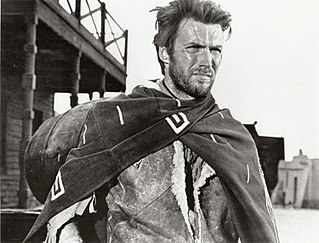Related Research Articles

A comedy film is a category of film which emphasizes on humor. These films are designed to make the audience laugh in amusement. Films in this style traditionally have a happy ending. Comedy is one of the oldest genres in film and it is derived from classical comedy in theatre. Some of the earliest silent films were comedies such as slapstick comedy which often relies on visual depictions, such as sight gags and pratfalls, so they can be enjoyed without requiring sound. To provide drama and excitement to silent movies, live music was played in sync with the action on the screen, by pianos, organs, and other instruments. When sound films became more prevalent during the 1920s, comedy films grew in popularity, as laughter could result from both burlesque situations but now also from humorous dialogue.

A film genre is a stylistic or thematic category for motion pictures based on similarities either in the narrative elements, aesthetic approach, or the emotional response to the film.

In film and video production, split screen is the visible division of the screen, traditionally in half, but also in several simultaneous images, rupturing the illusion that the screen's frame is a seamless view of reality, similar to that of the human eye. There may or may not be an explicit borderline. Until the arrival of digital technology, a split screen in films was accomplished by using an optical printer to combine two or more actions filmed separately by copying them onto the same negative, called the composite.
Mise-en-scène is the stage design and arrangement of actors in scenes for a theatre or film production, both in the visual arts through storyboarding, visual theme, and cinematography and in narrative storytelling through direction. The term is also commonly used to refer to single scenes that are representative of a film.

The fourth wall is a performance convention in which an invisible, imaginary wall separates actors from the audience. While the audience can see through this "wall", the convention assumes the actors act as if they cannot. From the 16th century onward, the rise of illusionism in staging practices, which culminated in the realism and naturalism of the theatre of the 19th century, led to the development of the fourth wall concept.
Hammer Film Productions Ltd. is a British film production company based in London. Founded in 1934, the company is best known for a series of Gothic horror and fantasy films made from the mid-1950s until the 1970s. Many of these involve classic horror characters such as Baron Victor Frankenstein, Count Dracula, and the Mummy, which Hammer reintroduced to audiences by filming them in vivid colour for the first time. Hammer also produced science fiction, thrillers, film noir and comedies, as well as, in later years, television series.
Diegesis is a style of fiction storytelling which presents an interior view of a world in which the narrator presents the actions of the characters to the readers or audience.
The New Wave, also called the French New Wave, is a French art film movement that emerged in the late 1950s. The movement was characterized by its rejection of traditional filmmaking conventions in favor of experimentation and a spirit of iconoclasm. New Wave filmmakers explored new approaches to editing, visual style, and narrative, as well as engagement with the social and political upheavals of the era, often making use of irony or exploring existential themes. The New Wave is often considered one of the most influential movements in the history of cinema.
A title sequence is the method by which films or television programmes present their title and key production and cast members, utilizing conceptual visuals and sound. It typically includes the text of the opening credits, and helps establish the setting and tone of the program. It may consist of live action, animation, music, still images, and/or graphics. In some films, the title sequence is preceded by a cold open.

Romance films involve romantic love stories recorded in visual media for broadcast in theatres or on television that focus on passion, emotion, and the affectionate romantic involvement of the main characters. Typically their journey through dating, courtship or marriage is featured. These films make the search for romantic love the main plot focus. Occasionally, romance lovers face obstacles such as finances, physical illness, various forms of discrimination, psychological restraints or family resistance. As in all quite strong, deep and close romantic relationships, the tensions of day-to-day life, temptations, and differences in compatibility enter into the plots of romantic films.
A story arc is the chronological construction of a plot in a novel or story. It can also mean an extended or continuing storyline in episodic storytelling media such as television, comic books, comic strips, board games, video games, and films with each episode following a dramatic arc. On a television program, for example, the story would unfold over many episodes. In television, the use of the story arc is common in sitcoms, and even more so in soap operas. In a traditional Hollywood film, the story arc usually follows a three-act structure. Webcomics are more likely to use story arcs than newspaper comics, as most webcomics have readable archives online that a newcomer to the strip can read in order to understand what is going on. Although story arcs have existed for decades, one of the first appearances of the term was in 1973 by Time Magazine for a synopsis of the movie The Friends of Eddie Coyle: "He accomplishes this with no sacrifice to the pacing of his action sequences or the suspenseful development of his story's arc."

An art film, art cinema, or arthouse film, is typically an independent film, aimed at a niche market rather than a mass market audience. It is "intended to be a serious, artistic work, often experimental and not designed for mass appeal", "made primarily for aesthetic reasons rather than commercial profit", and containing "unconventional or highly symbolic content".
Filmmaking or film production is the process by which a motion picture is produced. Filmmaking involves a number of complex and discrete stages, beginning with an initial story, idea, or commission. Production then continues through screenwriting, casting, pre-production, shooting, sound recording, post-production, and screening the finished product before an audience, which may result in a film release and exhibition. The process is nonlinear, as the director typically shoots the script out of sequence, repeats shots as needed, and puts them together through editing later. Filmmaking occurs in a variety of economic, social, and political contexts around the world, and uses a variety of technologies and cinematic techniques to make theatrical films, episodic films for television and streaming platforms, music videos, and promotional and educations films.

Experimental film or avant-garde cinema is a mode of filmmaking that rigorously re-evaluates cinematic conventions and explores non-narrative forms or alternatives to traditional narratives or methods of working. Many experimental films, particularly early ones, relate to arts in other disciplines: painting, dance, literature and poetry, or arise from research and development of new technical resources.
Nonlinear narrative, disjointed narrative, or disrupted narrative is a narrative technique where events are portrayed, for example, out of chronological order or in other ways where the narrative does not follow the direct causality pattern of the events featured, such as parallel distinctive plot lines, dream immersions or narrating another story inside the main plot-line. The technique is common in electronic literature, and particularly in hypertext fiction, and is also well-established in print and other sequential media.
The following outline is provided as an overview of and topical guide to film:
Supernatural horror film is a film genre that combines aspects of supernatural film and horror film. Supernatural occurrences in such films often include ghosts and demons, and many supernatural horror films have elements of religion. Common themes in the genre are the afterlife, the Devil, and demonic possession. Not all supernatural horror films focus on religion, and they can have "more vivid and gruesome violence".

A film – also called a movie, motion picture, moving picture, picture, photoplay or (slang) flick – is a work of visual art that simulates experiences and otherwise communicates ideas, stories, perceptions, feelings, beauty, or atmosphere through the use of moving images. These images are generally accompanied by sound and, more rarely, other sensory stimulations. The word "cinema", short for cinematography, is often used to refer to filmmaking and the film industry, and the art form that is the result of it.

Abed Gubi Nadir is a fictional character on the NBC/Yahoo! Screen sitcom series Community, created by Dan Harmon and portrayed by Danny Pudi. Talkative, literal, and sometimes overly pedantic, Abed is a student at Greendale Community College and one of the first members of the study group and Save Greendale Committee essential to the series. He is a pop-culture enthusiast, with extensive knowledge of TV shows and movies, as well as a passion for filmmaking. Because of his knowledge of television tropes, Abed usually serves as the self-aware bridge between Community and the real world, often pointing out the motifs and precedents taking place in each episode, usually without breaking the fourth wall. Abed's unusual social behavior and special interests insinuate that he is on the autism spectrum, as suggested by Dan Harmon and stated by other characters on the show. He is generally beloved by members of the study group and enjoys a close bond with Troy Barnes.
Inspired by the biological classification system of the Linnaean taxonomy, screenwriter Eric R. Williams developed the Screenwriters Taxonomy in 2017 to create a common language of creative collaboration for filmmakers. Williams’ central thesis in The Screenwriters Taxonomy: A Roadmap to Collaborative Storytelling is that the term “genre” is used so broadly to describe films that the modern use of the word has become meaningless. The Screenwriter's Taxonomy proposes seven categories for discussing the creative process of telling cinematic stories.
- Type
- Super Genre
- Macrogenres
- Microgenres
- Voice
- Pathway
- Point of View